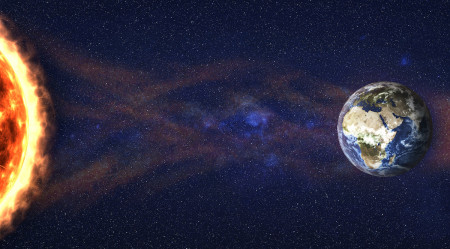Neutrino Energy: Bombarding neutrinos cause resonance

BERLIN, April 22, 2021 (Newswire.com) - As a collaboration between scientists in Germany, the USA, and beyond, the Neutrino Energy Group represents the cutting edge of alternative energy science. A few years ago, the scientific community scoffed at founder Holger Thorsten Schubart's assurances that neutrinos could be exploited for energy. Now, however, Holger and his team are hard at work designing the first generation of neutrino-powered electric cars and neutrino energy generators.
Groundbreaking Memorandum of Cooperation Marks New Era of International Neutrino Energy Research
In honor of the anniversary of its founding, the Centre for Materials for Electronics Technology (C-MET) in Pune, India has announced a deepening cooperation with Berlin, Germany's Neutrino Energy Group. Under the Memorandum of Cooperation signed, the two organizations will work together to develop new neutrinovoltaic technologies and start building out the infrastructure for mass-production of neutrino energy devices. Having proved itself one of the world's preeminent institutes of revolutionary nanomaterial research, C-MET Pune is an ideal match for neutrinovoltaic technologies, which center around graphene, a simple, abundant, yet tricky nanostructure.
An Active Collaboration Strategy Will Train C-MET's Skilled Human Resources
The Neutrino Energy Group intends to lean on the expertise of C-MET Pune's engineering talent while simultaneously training the first generation of neutrinovoltaic technicians. Various areas of C-MET Pune's expertise, including 2D materials and quantum dots, will prove highly useful in developing efficient, powerful, and mass-producible neutrino energy technologies.
Neutrinovoltaics Are a Natural Evolution of Photovoltaics
Estimates suggest that 60 billion neutrinos pass through every square centimeter of the Earth's surface every day. For decades, scientists concluded that neutrinos do not carry energy. With the 2015 discovery that neutrinos possess mass, however, it was proven that neutrinos have energy-generation potential. As a result, neutrinovoltaics can be considered a natural evolution of solar energy.
In neutrino energy, humanity finally has a reliable solution to the modern energy crisis. Neutrinovoltaic devices still have a ways to go before they can be practically implemented, but just as with photovoltaic cells, this new technology will eventually be accepted as a viable solution to the world's energy needs.
At the conclusion of the conference, Dr. Holger Thorsten Schubart, Dr. Bharat Kale, and Dr. Vijar Bhatkar unanimously agreed to sign a Memorandum of Cooperation (MOC) with Dr. Schubart representing the international research team behind the Neutrino Energy Group and Dr. Kale and Dr. Bhaktar representing C-MET Pune.
The true impact of this moment may not be known for decades. Historians of the future, however, will mark 2021 as the year that both Germany and India took a massive leap forward in sustainable energy engineering.
Author: Samuel Teshome
Neutrino Deutschland GmbH
Unter den Linden 21-23
10117 Berlin
Tel.:+493020924013
Source: Neutrino Energy